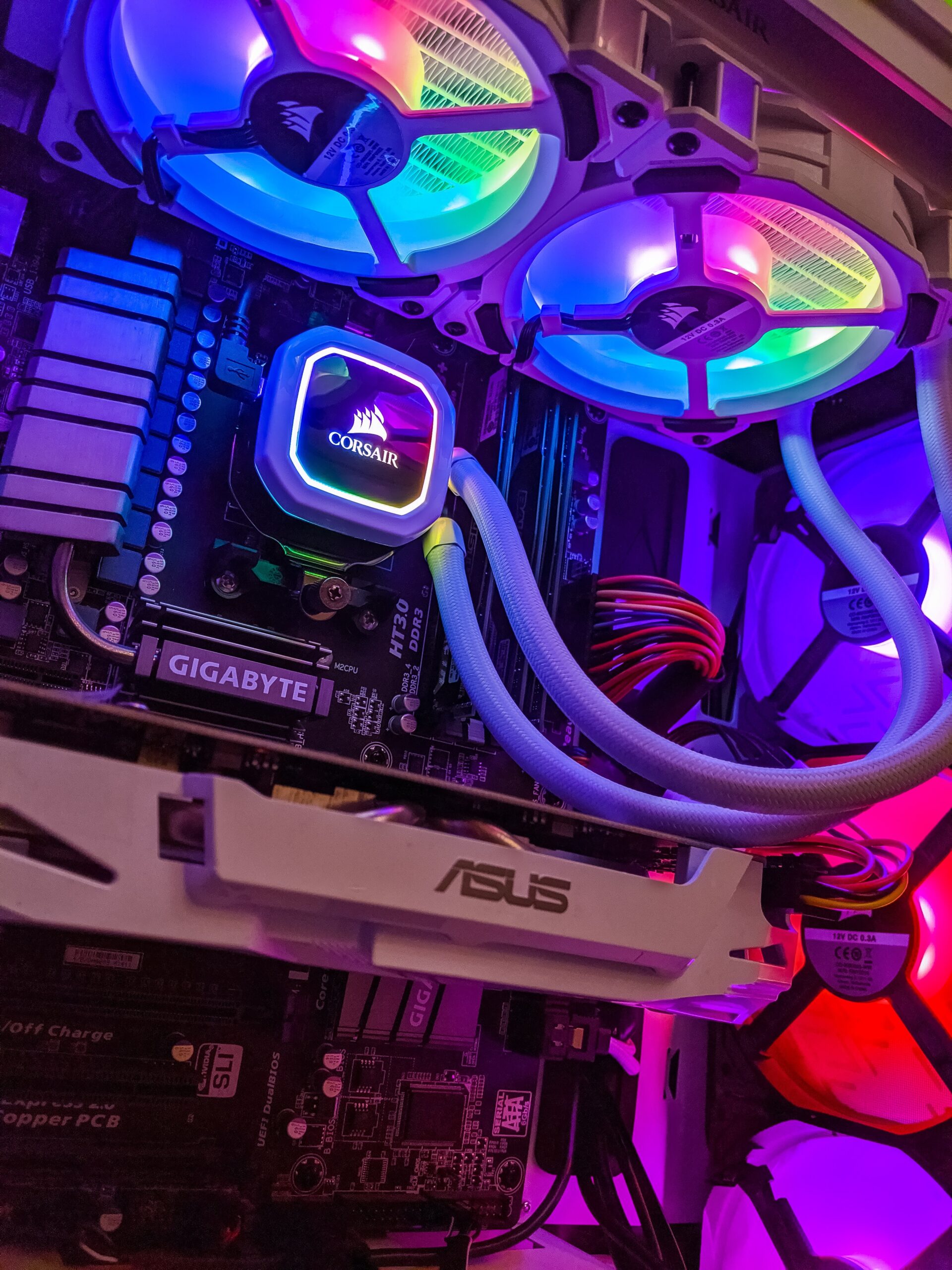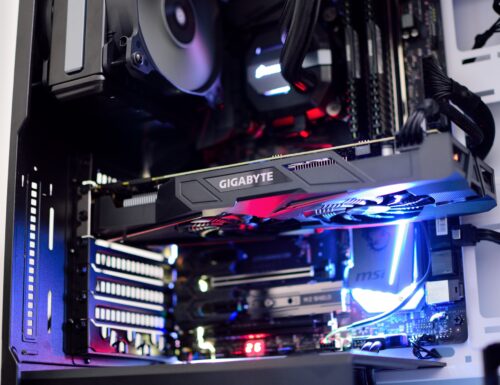Whether you’re a tech enthusiast or a casual user, having a basic knowledge of computer components empowers you to make informed decisions when it comes to your device’s performance and longevity. In this comprehensive blog post, we’ll delve into the world of computer components, exploring their functions, key factors to consider when choosing them, and the frequency at which you may need to upgrade.
Motherboard
The motherboard is the central component that connects and shares communication between various other components in a computer system. It acts as a foundation, providing the necessary slots, sockets, and connectors for other components to interact effectively.
At its core, a motherboard houses the CPU, RAM, and GPU, along with other crucial components such as storage drives and expansion cards. The motherboard’s chipset manages and coordinates these communications, ensuring smooth operation and efficient data transfer. The motherboard’s form factor determines its physical size and layout, which in turn affects the compatibility with other components. When choosing a motherboard, it’s vital to ensure compatibility with your CPU socket type, RAM technology, and expansion slots needed for future upgrades.
As for upgrading the motherboard, it is not a frequent requirement compared to other components. Upgrading the motherboard usually occurs when you need to accommodate a new generation of CPUs or if you require additional features, such as more USB ports, faster data transfer interfaces, or improved connectivity options. However, upgrading the motherboard often entails replacing other components, such as CPU and RAM, due to compatibility limitations. The frequency of motherboard upgrades depends on individual needs and the rate of technological advancements. As a general guideline, most users find it sufficient to upgrade their motherboard every four to six years, or when significant technological advancements or personal requirements necessitate the change.
Central Processing Unit – CPU
The CPU, or Central Processing Unit, is the brain of a computer. It is responsible for executing instructions, performing calculations, and managing the overall operation of the system. Without a CPU, a computer would be incapable of functioning. At its core, a CPU consists of multiple processing units known as cores, which work in tandem to handle various tasks simultaneously. The CPU operates using a clock speed measured in gigahertz (GHz), indicating how many cycles it can perform per second.
When you execute a program or perform a task, the CPU retrieves instructions from the computer’s memory, decodes them, and executes the necessary operations. It performs complex calculations, handles data transfers, and manages communication between different hardware components. In short, the CPU acts as the conductor, coordinating and directing the flow of information within your computer.
As for the question of when to upgrade your CPU, it depends on your specific needs and usage. If you engage in demanding tasks like gaming, video editing, or running resource-intensive software, you may benefit from upgrading your CPU every two to three years to keep up with the latest advancements and ensure optimal performance. However, for general day-to-day tasks like web browsing, word processing, and multimedia consumption, CPU upgrades may not be necessary as frequently. In these cases, a CPU can often last for six to ten years without significant performance degradation.
Graphical Processing Unit – GPU
The GPU (Graphics Processing Unit) is a vital component responsible for rendering images, videos, and animations on your computer screen. It is specifically designed to handle complex graphics computations efficiently. While the CPU handles general computing tasks, the GPU focuses on delivering high-performance graphics processing.
It consists of thousands of small processing cores that work in parallel to handle massive amounts of data simultaneously. These cores are optimized for handling mathematical calculations required for rendering graphics. The GPU uses specialized algorithms and shaders to transform raw data into visually stunning images with textures, lighting effects, and realistic animations.
When considering how often to upgrade your GPU, several factors come into play. Firstly, assess your specific needs and use cases. If you primarily use your computer for web browsing, office tasks, or basic video streaming, a mid-range GPU should suffice for three years. On the other hand, if you’re a passionate gamer or work with demanding graphic-intensive applications such as video editing or 3D rendering, you may need to upgrade more frequently to ensure optimal performance. Another aspect to consider is technological advancements. GPU manufacturers constantly release new models with improved performance and features. Upgrading to a mid-range GPU every two to three years may strike a good balance between performance and affordability for many users.
Random Access Memory – RAM
Random Access Memory (RAM) is a critical component of a computer that plays a vital role in its performance and multitasking capabilities. RAM serves as a temporary storage space for data that the CPU actively uses, allowing for faster access and retrieval compared to the slower permanent storage of the solid-state drive (SSD). RAM operates on the principle of random access, meaning that any piece of data stored within it can be accessed quickly and in any order.
When you run an application or open a file, the necessary data is transferred from the storage drive to the RAM for quick access by the CPU. The more RAM your system has, the more data it can store temporarily, resulting in smoother multitasking and faster response times. Insufficient RAM can lead to sluggish performance, frequent application crashes, and excessive swapping of data between RAM and the storage drive, known as paging, which significantly slows down the system.
Determining when to upgrade your RAM depends on your specific needs and usage patterns. If you find that your computer struggles to handle multiple programs simultaneously, experiences frequent slowdowns, or exhibits high RAM usage during normal tasks, upgrading your RAM may be beneficial. Additionally, if you work with resource-intensive applications such as video editing software or virtual machines, more RAM can improve their performance. Upgrading RAM usually involves purchasing compatible modules and installing them in the available slots on the motherboard. It’s important to ensure that the new RAM matches the speed, type, and voltage requirements of your system.
Solid State Drive – SSD
In the realm of computer storage, Solid-State Drives (SSDs) have revolutionized the way we interact with data. Offering unparalleled speed, reliability, and efficiency, SSDs have become the preferred choice for many PC enthusiasts and professionals. SSD is a data storage device that uses flash memory to store and retrieve data rapidly. Unlike traditional Hard Disk Drives (HDDs), SSDs have no moving mechanical parts, resulting in lightning-fast read and write speeds, enhanced durability, and reduced power consumption.
SSDs leverage flash memory chips to store data electronically. These memory cells are organized into pages and blocks, and data is written and read through electrical charges. When data is written to an SSD, it is stored in individual cells. During reading, the SSD retrieves the stored data by measuring the electrical charges within each cell. This data retrieval process significantly reduces latency and access times, resulting in faster boot times, snappier application launches, and overall improved system responsiveness.
Generally, it is advisable to consider upgrading your SSD every three to five years to take advantage of the latest advancements. However, if you are experiencing storage limitations, slow read/write speeds, or find yourself working with resource-intensive tasks, upgrading to a newer and larger capacity SSD can significantly improve your computing experience.
Peripheral Devices
Peripheral devices are the external components that connect to a computer system to enhance its functionality or provide additional capabilities. These devices can be input devices, such as a mouse, keyboard, scanner, or microphone that allows the user to enter data into the computer. There also is output devices such as your printer, monitor, or speakers that display of replay back information processed by the computer.
Keyboard
A keyboard is an essential input device that allows you to type and interact with your computer. It uses a combination of mechanical switches or membrane technology to register keystrokes. Upgrading your keyboard depends on personal preference, but it’s typically done when seeking improved features, comfort, or durability.
Mouse
The average lifespan of a wireless mouse is only good for two to three years. If you want a mouse to live longer, then you should consider getting a wired version, with wired mice generally lasting longer with an average of five to seven years.
Headset / Headphone
A wired, cheap headset is likely to break after the first year of use. A good quality set can last decades, provided it gets the correct care. A wireless set is good too – lasting on average around three to four years.
Monitor
All monitors have different lifespans and there’s no definite answer to this one. They should last you at least a good three years, so keep this in mind.
If you would like help from our trusted IT experts with over 20 years of experience, then please click here to contact us.
By Sophie Wholer – 1st May 2023


